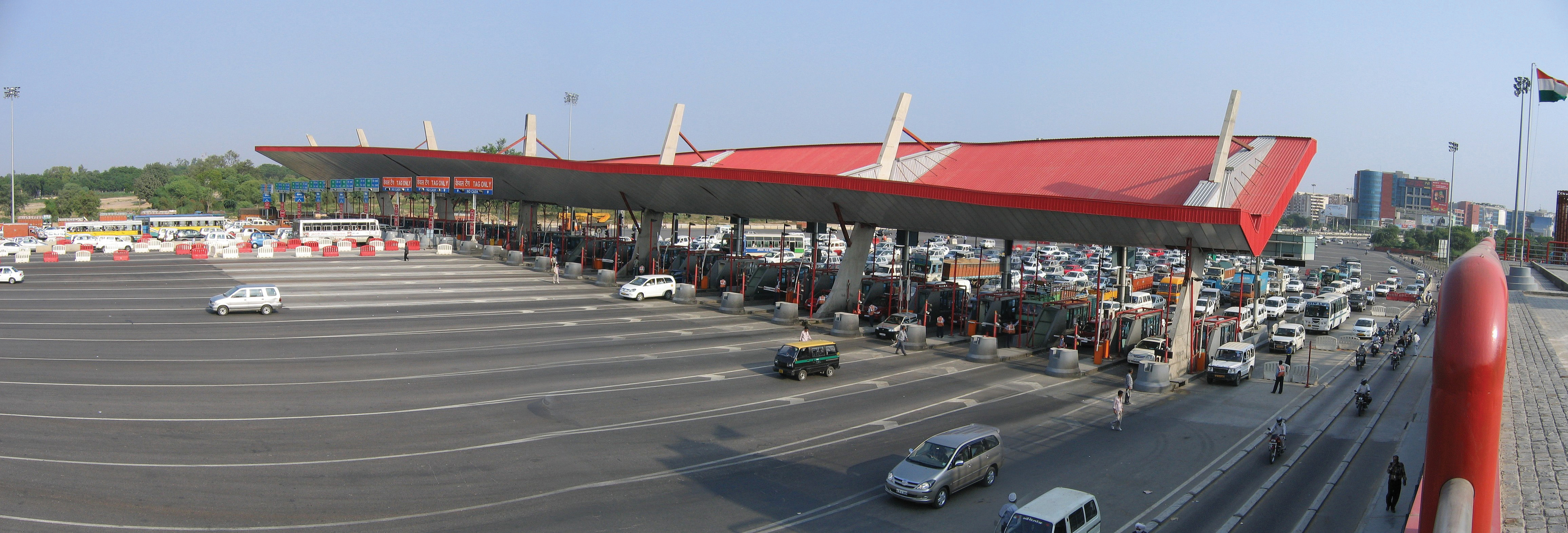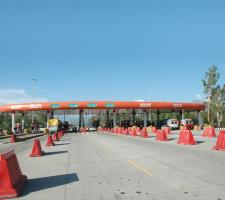
An ambitious programme of new and upgraded interoperable toll systems has been launched in India, featuring far-reaching technology developments. David Crawford reports.
In April this year, Indian Union Minister for Road Transport & Highways CP Joshi inaugurated a new era of electronic toll collection (ETC) in India when he unveiled the country’s first RFID-based tolling installation. This was at a recently-completed plaza at Chandimandir, near the city of Panchkula in the northern state of Haryana. The system is the first in the country to use charging equipment complying with the relatively new ISO 18000-6C standard (see panel).The Chandimandir plaza controls traffic on the four-lane Zirakpur-Parwanoo section of National Highway Five, which also passes through Punjab and Himachal Pradesh. The three northern states, which lie west and north of the Indian capital of New Delhi, are due to benefit from 1167km of major road projects, valued at 150 billion Indian rupees (US$2.7bn), starting in the current financial year.
At the same time, Joshi launched an ambitious National Highways Authority of India (NHAI) programme for the rollout of new and upgraded interoperable toll plazas (using ISO 18000-6C based ETC) on major routes across the country. Toll charges will be deducted from pre-paid accounts. Specifications for future NHAI deployments will include requirements for interoperable on-board units (OBU).
Call for interest
The authority has recently issued a call for expressions of interest from companies wanting to be considered as service providers for the delivery of a central clearing house to handle transactions, a national OBU distribution system and specifications for toll plaza schemes. The clearing house will need to have direct electronic connections with all of NHAI’s new and upgraded toll plazas, which will use RFID technology following extensive road trials alongside competing options in 2009-2010.Implementations will continue to offer, at least in the short term, scope for alternative manual payment, for the benefit of occasional users of the NHAI network; although the authority envisages all vehicles eventually coming into the ETC system, at a cost of 100 rupees (US$1.80) for each OBU. (The interoperability interfaces for the OBUs have yet to be decided).
Drivers living within a 10km or 20km radius of the Chandimandir plaza are receiving discounts, in the form of monthly passes enabling them to make any number of trips. This principle is likely to be extended to future implementations.
There are more than 200 tolled sections of road in India, covering nearly 11,000km of NHAI’s national network. Out of these, it operates 112 in its own right, with the rest contracted out to concessionaires under build, operate and transfer (BOT) contracts. Revenues collected in 2010-2011 totalled 55 billion rupees (US$993 million). The authority plans to hand over all of its own operations to concession arrangements over time.
Learning curve
The Chandimandir ETC system has been developed and installed by the Indian subsidiary ofHe points out that the technology is very sensitive to environmental conditions. “However, we feel confident that its manufacturers will continue to upgrade products based on RFID to make it seamless.”
Dealing with overloading
The Zirakpur to Parwanoo project also features traffic management technology including a video incident detection system designed to cope with the hilly nature of the route and weigh-in-motion capability. WiM has been in use on Indian highways for some time, with the aim of deterring overladen vehicles from damaging road structures. For future concessions, NHAI plans to help deal with the issue via toll tariffs based on vehicle classifications.Efkon, says Kulkarni, has a continuing presence in the majority of NHAI’s current project programme, “giving us a definite heads up, in being part of NHAI’s plans for unified ETC over the next five to 10 years”.
The Chandimandir ETC implementation is not, however, the first in India. In January 2008
The route, one of the most heavily-used in the north of the country, carries over 130,000 vehicles per day and provides vital connections with New Delhi’s Indira Gandhi International Airport and the Gurgaon shopping complex.
A 20-year BOT concession for Delhi to Gurgaon is being run by DS Constructions. Motorists can use cash or a smartcard on all except four dedicated express lanes which offer payment via microwave-enabled tags.
The system is not interoperable with those current and projected to be based on ISO 180000-6C. Kapsch TrafficCom is understood to be considering whether to offer an RFID capability in the Indian market.
Wastage and leakage
Driving the push for ETC are findings fromEach vehicle is spending between five and 10 minutes queuing at every plaza. A truck plying the 1407km route from New Delhi to Bombay will presently have to stop 20 times. CRISIL calculates that the resulting fuel wastage is costing India’s economy 10 billion rupees a year. ‘Leakages’ resulting from drivers avoiding payment, or toll booth attendants fraudulently under-recording their takings, account for further losses of 10% of revenues, or around 12 billion rupees a year, according to industry estimates.
ISO 18000-6C
The
The ISO 18000-6C standard is being closely examined by the International Bridge, Tunnel & Turnpike Association and its Interoperability Committee, in the context of moves towards the development of tolling interoperability across the US. The
The NHAI
The












